School Survey on Crime and Safety (SSOCS) 2018 and 2020 Update
School Survey on Crime and Safety (SSOCS) 2018 and 2020 Update
Appendix B - SSOCS 2018 & 2020 Questionnaires
School Survey on Crime and Safety (SSOCS) 2018 and 2020 Update
OMB: 1850-0761
School Survey on Crime and Safety (SSOCS)
2018 and 2020 Update
OMB #1850-0761 v.17
Appendix B – 2018 and 2020 Questionnaires
2018 Questionnaire - page 2
2020 Questionnaire - page 25
National Center for Education Statistics
Institute of Education Sciences
U.S. Department of Education
May 2019
revised September 2019
U.S. DEPARTMENT OF EDUCATION
NATIONAL CENTER FOR EDUCATION STATISTICS
OMB No. 1850-0761: Approval Expires 7/31/2020
Collected by:
U.S. DEPARTMENT OF COMMERCE
Economics and Statistics Administration
U.S. CENSUS BUREAU
SCHOOL SURVEY ON CRIME AND SAFETY
PRINCIPAL QUESTIONNAIRE
2017–18 SCHOOL YEAR
This survey is designed to be completed by the principal or the person most knowledgeable about school crime and policies to provide a safe environment at your school.
(Please correct any errors in name, address, and ZIP Code.)
THIS SURVEY HAS BEEN ENDORSED BY:
American Association of School Administrators American Federation of Teachers
American School Counselors Association Association for Middle Level Education Association of American Educators Council of Chief State School Officers Education Northwest
National Association of Elementary School Principals National Association of School Psychologists
National Association of School Resource Officers National Association of Secondary School Principals National Association of State Boards of Education National Education Association
National PTA
National School Safety Center School Safety Advocacy Council
School Social Work Association of America UCLA Center for Mental Health in Schools
NOTICE
The National Center for Education Statistics (NCES), within the U.S. Department of Education, is authorized to conduct this survey by the Education Sciences Reform Act of 2002 (ESRA 2002, 20 U.S.C. §9543).
All of the information you provide may be used only for statistical purposes and may not be disclosed, or used, in identifiable form for any other purpose except as required by law
(20 U.S.C. §9573 and 6 U.S.C. §151). Reports of the findings from the survey will not identify participating districts, schools, or staff. Individual responses will be combined with those from other participants to produce summary statistics and reports.
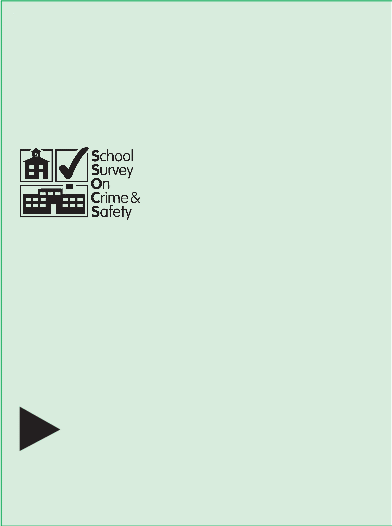
PLEASE RESPOND BY:
FORM SSOCS-1
(11-9-2017)
§,"’¤ 110106
DEFINITIONS
The following words are bolded and marked by an asterisk (*) wherever they appear in the questionnaire. Please use these definitions as you respond.
Active shooter – an individual actively engaged in killing or attempting to kill people in a confined and populated area; in most cases, active shooters use firearm(s) and there is no pattern or method to their selection of victims.
Arrest – The act of detaining in legal custody. An "arrest" is the deprivation of a person’s liberty by legal authority in response to a criminal charge.
At school/at your school – activities happening in school buildings, on school grounds, on school buses, and at places that hold
school-sponsored events or activities. Unless otherwise specified, this refers to normal school hours or to times when school activities/events were in session.
Bullying – any unwanted aggressive behavior(s) by another youth or group of youths that involves an observed or perceived power imbalance and is repeated multiple times or is highly likely to be repeated. Bullying occurs among youth who are not siblings or current dating partners.
Cyberbullying – bullying that occurs when willful and repeated harm is inflicted through the use of computers, cell phones, or other electronic devices.
Diagnostic mental health assessment – an evaluation conducted by a mental health professional that identifies whether an individual has one or more mental health diagnoses. This is in contrast to an educational assessment, which does not focus on clarifying a student’s mental health diagnosis.
Evacuation – a procedure that requires all students and staff to leave the building. While evacuating to the school’s field makes sense for a fire drill that only lasts a few minutes, it may not be an appropriate location for a longer period of time. The evacuation plan should encompass relocation procedures and include backup buildings to serve as emergency shelters, such as nearby community centers, religious institutions, businesses, or other schools. Evacuation also includes “reverse evacuation,” a procedure for schools to return students to the building quickly if an incident occurs while students are outside.
Firearm/explosive device – any weapon that is designed to (or may readily be converted to) expel a projectile by the action of an explosive.
This includes guns, bombs, grenades, mines, rockets, missiles, pipe bombs, or similar devices designed to explode and capable of causing bodily harm or property damage.
Gang – an ongoing loosely organized association of three or more persons, whether formal or informal, that has a common name, signs, symbols, or colors, whose members engage, either individually or collectively, in violent or other forms of illegal behavior.
Gender identity – means one’s inner sense of one’s own gender, which may or may not match the sex assigned at birth. Different people choose to express their gender identity differently. For some, gender may be expressed through, for example, dress, grooming, mannerisms, speech patterns, and social interactions. Gender expression usually ranges between masculine and feminine, and some transgender people express their gender consistent with how they identify internally, rather than in accordance with the sex they were assigned at birth.
Harassment – conduct that is unwelcome and denies or limits a student’s ability to participate in or benefit from a school’s education program. All students can be victims of harassment and the harasser can share the same characteristics of the victim. The conduct can be verbal, nonverbal, or physical and can take many forms, including verbal acts and name-calling, as well as
non-verbal conduct, such as graphic and written statements, or conduct that is physically threatening, harmful, or humiliating.
Hate crime – A committed criminal offense that is motivated, in whole or in part, by the offender’s bias(es) against a race, religion, disability, sexual orientation, ethnicity, gender, or gender identity; also known as bias crime.
Lockdown – a procedure that involves occupants of a school building being directed to remain confined to a room or area within a building with specific procedures to follow. A lockdown may be used when a crisis occurs outside of the school and an evacuation would be dangerous. A lockdown may also be called for when there is a crisis inside and movement within the school will put students in jeopardy. All exterior doors are locked and students and staff stay in their classrooms.
Mental health disorders – collectively, all diagnosable mental disorders or health conditions that are characterized by alterations in thinking, mood, or behavior (or some combination thereof) associated with distress and/or impaired functioning.
Mental health professionals – mental health services are provided by several different professions, each of which has its own training and areas of expertise. The types of licensed professionals who may provide mental health services include psychiatrists, psychologists, psychiatric/mental health nurse practitioners, psychiatric/mental health nurses, clinical social workers, and professional counselors.
Physical attack or fight – an actual and intentional touching or striking of another person against his or her will, or the intentional causing of bodily harm to an individual.
2 §,#&¤ 110205
§,#&¤ 110205
FORM SSOCS-1 (11-9-2017)
DEFINITIONS – Continued
The following words are bolded and marked by an asterisk (*) wherever they appear in the questionnaire. Please use these definitions as you respond.
Rape – forced sexual intercourse (vaginal, anal, or oral penetration). This includes sodomy and penetration with a foreign object. All students, regardless of sex or gender identity, can be victims
of rape. [Counts of attempted rape should be added to counts of rapes in your reporting of item 30a.]
Restorative circle – a formal mediation process led by a facilitator that brings affected parties of a problem together to explore what happened, reflect on their roles, find a solution, and ultimately restore harmony to individual relationships and the larger community.
Robbery (taking things by force) – the taking or attempting to take anything of value that is owned by another person or organization, under confrontational circumstances, by force or threat of force or violence and/or by putting the victim in fear. A key difference between robbery and theft/larceny is that robbery involves a threat or assault.
School Resource Officer (SRO) – a career sworn law enforcement officer with arrest authority, who has specialized training and is assigned to work in collaboration with school organizations.
Sexual assault – an incident that includes threatened rape, fondling, indecent liberties, or child molestation. All students, regardless of sex or gender identity, can be victims of sexual assault.
Classification of these incidents should take into consideration the age and developmentally appropriate behavior of the offender(s).
Sexual harassment – conduct that is unwelcome, sexual in nature, and denies or limits a student’s ability to participate in or benefit from a school’s education program. All students, regardless of sex or gender identity, can be victims of sexual harassment, and the harasser and the victim can be of the same sex. The conduct can be verbal, non-verbal, or physical and can take many forms, including verbal acts and name-calling, as well as non-verbal conduct, such as graphic and written statements, or conduct that is physically threatening, harmful, or humiliating.
Sexual misconduct – Any act, including, but not limited to, any verbal, nonverbal, written or electronic communication or physical activity, directed toward or with a student regardless of the age of the student that is designed to establish a romantic or sexual relationship with the student.
School staff have power over students by virtue of their position, thus student-staff relationships are not equal and students cannot be consenting parties to romantic or sexual relationships.
Sexual orientation – means one’s emotional or physical attraction to the same and/or opposite sex.
Shelter-in-place – a procedure similar to a lockdown in that the occupants are to remain on the premises; however, shelter-in-place is designed to
use a facility and its indoor atmosphere to temporarily separate people from a hazardous outdoor environment. Everyone would be brought indoors and building personnel would close all windows and doors and shut down the heating, ventilation, and air conditioning system (HVAC). This would create a neutral pressure in the building, meaning the contaminated air would
not be drawn into the building.
Special education student – a child with a disability, defined as mental retardation, hearing impairments (including deafness), speech or language impairments, visual impairments (including blindness), serious emotional disturbance, orthopedic impairments, autism, traumatic brain injury, other health impairments, or specific learning disabilities, who needs special education and related services and receives these under the Individuals with Disabilities Education Act (IDEA).
Specialized school – a school that is specifically for students who were referred for disciplinary reasons, although the school may also have students who were referred for other reasons. The school may be at the same location as your school.
Theft/larceny (taking things worth over $10 without personal confrontation) – the unlawful taking of another person’s property without personal confrontation, threat, violence, or bodily harm. This includes pocket picking, stealing a purse or backpack (if left unattended or no force was used to take it from owner), theft from a building, theft from a motor vehicle or of motor vehicle parts or accessories, theft of a bicycle, theft from a vending machine, and all other types of thefts.
Threat assessment team – a formalized group of persons who meet on a regular basis with the common purpose of identifying, assessing, and managing students who may pose a threat of targeted violence in schools.
Treatment – a clinical intervention addressed at lessening or eliminating the symptoms of a mental health disorder. This may include psychotherapy, medication treatment, and/or counseling.
Vandalism – the willful damage or destruction of school property, including bombing, arson, graffiti, and other acts that cause property damage. This includes damage caused by computer hacking.
Violence – actual, attempted, or threatened fight or assault.
Weapon – any instrument or object used with the intent to threaten, injure, or kill. This includes look-alikes if they are used to threaten others.
3 FORM
SSOCS-1 (11-9-2017)
FORM
SSOCS-1 (11-9-2017)
§,#&¤ 110205
SURVEY INSTRUCTIONS:
For most questions, please mark the box that best reflects your school’s circumstances. Please mark your response with an "X".
Some questions ask for counts or percents of items. Please place an "X" in the None box, rather than leaving the item blank, if the number of such items at your school is zero.
It is not necessary to consult any records for items 9 and 42. Please provide estimates for these questions.
Definitions are available for many terms on pages 2 and 3. Defined terms are bolded and marked with an asterisk (*) throughout the survey.
Some questions refer to the 2017–18 school year. Please report for the school year to date.
Please have this questionnaire filled out by the person most knowledgeable about school crime and policies to provide a safe environment.
Please keep a copy of the completed questionnaire for your records.
WHERE SHOULD I RETURN MY COMPLETED QUESTIONNAIRE?
Please return your completed questionnaire in the enclosed postage-paid envelope or mail it to:
U.S. Census Bureau
ATTN: DCB/PCSPU, Building 60A 1201 E. 10th Street
Jeffersonville, IN 47132-0001
If you have any questions about this questionnaire, please contact the U.S. Census Bureau at: 1-888-595-1332 or at [email protected].
Paperwork Burden Statement
According to the Paperwork Reduction Act of 1995, no persons are required to respond to a collection of information unless it displays a valid OMB control number. The valid OMB control number for this voluntary information collection is 1850-0761. The time required to complete this information collection is estimated to average 53 minutes per response, including the time to review instructions, search existing data resources, gather the data needed, and complete and review the information collection. If you have any comments concerning the accuracy of the time estimate, suggestions for improving this collection, or comments or concerns about the contents or the status of your individual submission of this questionnaire, please e-mail: [email protected], or write directly to: School Survey on Crime and Safety (SSOCS), National Center for Education Statistics, Potomac Center Plaza, 550 12th Street SW, Room #4012, Washington, DC 20202.
4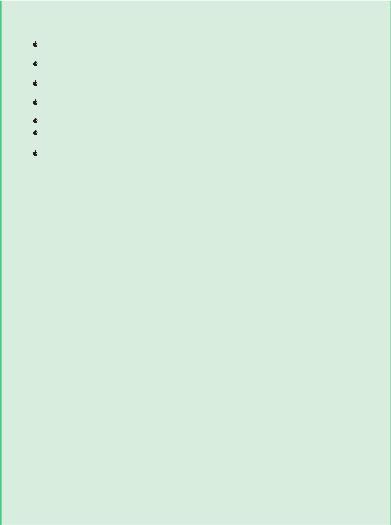 §,$%¤ 110304
§,$%¤ 110304
FORM SSOCS-1 (11-9-2017)
School Practices and Programs |
||||
1. During the 2017–18 school year, was it a practice of your school to do the following? If your school changed its practices during the school year, please answer regarding your most recent practice. |
||||
Check "Yes" or "No" on each line.
a. Require visitors to sign or check in and wear badges |
110 |
YES |
NO |
|
1 |
2 |
|||
b.
c.
d. e. f. g. h.
i. j. k. l. m. n.
o. p.
q. r. s. t. u.
*Please |
Control access to school buildings during school hours (e.g., locked or monitored doors, loading docks) |
112 |
1 |
2 |
Control access to school grounds during school hours (e.g., locked or monitored gates) |
114 |
1 |
2 |
|
Require metal detector checks on students every day |
116 |
1 |
2 |
|
Perform one or more random metal detector checks on students |
120 |
1 |
2 |
|
Equip classrooms with locks so that doors can be locked from the inside |
121 |
1 |
2 |
|
Close the campus for most or all students during lunch |
122 |
1 |
2 |
|
Perform one or more random sweeps (e.g., locker checks, dog sniffs) for contraband (e.g., drugs or weapons*) |
125 |
1 |
2 |
|
Require drug testing for students participating in athletics or other extracurricular activities |
129 |
1 |
2 |
|
Require students to wear uniforms |
134 |
1 |
2 |
|
Enforce a strict dress code |
136 |
1 |
2 |
|
Provide school lockers to students |
138 |
1 |
2 |
|
Require clear book bags or ban book bags on school grounds |
140 |
1 |
2 |
|
Have “panic button(s)” or silent alarm(s) that directly connect to law enforcement in the event of an incident |
139 |
1 |
2 |
|
Provide an electronic notification system that automatically notifies parents in case of a school-wide emergency |
141 |
1 |
2 |
|
Provide a structured anonymous threat reporting system (e.g., online submission, telephone hotline, or written submission via drop box) |
143 |
1 |
2 |
|
Require students to wear badges or picture IDs |
142 |
1 |
2 |
|
Require faculty and staff to wear badges or picture IDs |
144 |
1 |
2 |
|
Use one or more security cameras to monitor the school |
146 |
1 |
2 |
|
Provide two-way radios to any staff |
150 |
1 |
2 |
|
Prohibit non-academic use of cell phones or smartphones during school hours |
153 |
1 |
2 |
|
use the definition on pages 2 and 3. |
||||
 FORM
SSOCS-1 (11-9-2017)
FORM
SSOCS-1 (11-9-2017)
§,%$¤ 110403 5
2. Does your school have a written plan that describes procedures to be performed in the following scenarios? |
|||
a. Active shooter* 155 |
YES |
NO |
|
1 |
2 |
||
b. c. d. e.
f. g. h. |
Natural disasters (e.g., earthquakes or tornadoes) 158 |
1 |
2 |
Hostages 162 |
1 |
2 |
|
Bomb threats or incidents 166 |
1 |
2 |
|
Chemical, biological, or radiological threats or incidents (e.g., release of mustard gas, anthrax, smallpox, or radioactive materials) 170 |
1 |
2 |
|
Suicide threat or incident 169 |
1 |
2 |
|
Pandemic disease 161 |
1 |
2 |
|
Post-crisis reunification of students with their families 157 |
1 |
2 |
|
3. During the 2017–18 school year, has your school drilled students on the use of the following emergency procedures? Please respond to each of these according to the definitions provided on pages 2 and 3. |
|||
a. Evacuation* 163 |
YES |
NO |
|
1 |
2 |
||
b. c. |
Lockdown* 165 |
1 |
2 |
Shelter-in-place* 167 |
1 |
2 |
|
4. During the 2017–18 school year, did your school have any activities that included the following components for students?
|
|||
a. Prevention curriculum, instruction, or training for students (e.g., conflict 174 resolution, anti-bullying*, dating violence* prevention) |
YES |
NO |
|
1 |
2 |
||
b.
c. d. e. f. g. h.
*Please |
Social emotional learning (SEL) for students (e.g., social skills, anger management, mindfulness) 183 |
1 |
2 |
Behavioral or behavior modification intervention for students (including the use of positive reinforcements) 176 |
1 |
2 |
|
Individual mentoring/tutoring/coaching of students by adults 181 |
1 |
2 |
|
Student involvement in peer mediation 175 |
1 |
2 |
|
Student court to address student conduct problems or minor offenses 177 |
1 |
2 |
|
Student involvement in restorative circles* (e.g., "peace circles," "talking circles," "conflict circles") 179 |
1 |
2 |
|
Programs to promote a sense of community/social integration among students 186 |
1 |
2 |
|
use the definition on pages 2 and 3. |
|||
6





































FORM SSOCS-1 (11-9-2017)
During the 2017–18 school year, did your school have a threat assessment team* or any other formal group of persons to identify students who might be a potential risk for violent or harmful behavior (toward themselves or others)?
600 1 Yes
➤
➤ GO
TO item 7
below.
During the 2017–18 school year, how often did your school’s threat assessment team* formally meet?
Check one response.
602 1 At least once a week
2 At least once a month
3 On occasion
4 Never
During the 2017–18 school year, did your school have any recognized student groups with the following purposes?
Check "Yes" or "No" on each line.



 Acceptance
of sexual
orientation* and
gender
identity* of
students
(e.g., Gay-Straight
Alliance)
Acceptance
of sexual
orientation* and
gender
identity* of
students
(e.g., Gay-Straight
Alliance)
YES NO
604 1 2
-
b. Acceptance of students with disabilities (e.g., Best Buddies)
606
1
2
c. Acceptance of cultural diversity (e.g., Cultural Awareness Club)
608
1
2
Parent and Community Involvement at School
Which of the following does your school do to involve or help parents? Check "Yes" or "No" on each line.

YES
NO
190
1
2
192
1
2
Have a formal process to obtain parental input on policies related to school crime and discipline

 Provide
training or technical assistance to parents in dealing with
students’ problem
behavior
Provide
training or technical assistance to parents in dealing with
students’ problem
behavior
*Please use the definition on pages 2 and 3.
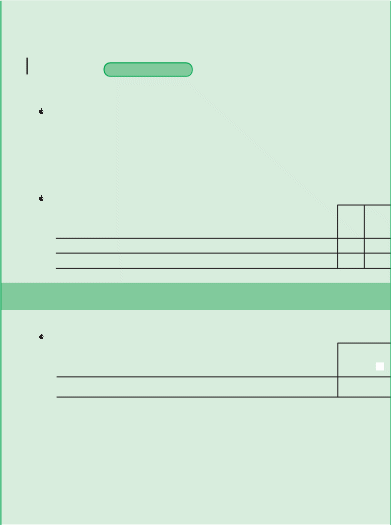
7
§,’"¤ 110601
9. What is your best estimate of the percentage of students who had at least one parent or guardian participating in the following events during the 2017–18 school year?
|
|||||||||
a. Open house or back-to-school night |
196 |
0–25% |
26–50% |
51–75% |
76–100% |
School does not offer |
|||
1 |
2 |
3 |
4 |
5 |
|||||
b. |
Regularly scheduled parent-teacher conferences 198 |
1 |
2 |
3 |
4 |
5 |
|||
10. During the 2017–18 school year, were any of the following community and outside groups involved in your school’s efforts to promote safe, disciplined, and drug-free schools?
|
|||||||||
a. Parent groups |
|
|
|
|
204 |
YES |
NO |
||
1 |
2 |
||||||||
b. |
Social service agencies 206 |
1 |
2 |
||||||
c. |
Juvenile justice agencies 208 |
1 |
2 |
||||||
d. |
Law enforcement agencies 210 |
1 |
2 |
||||||
e. |
Mental health agencies 212 |
1 |
2 |
||||||
f. |
Civic organizations/service clubs 214 |
1 |
2 |
||||||
g. |
Private corporations/businesses 216 |
1 |
2 |
||||||
h. |
Religious organizations 218 |
1 |
2 |
||||||
*Please use the definition on pages 2 and 3. |
|||||||||
8

























FORM SSOCS-1 (11-9-2017)
School Security Staff |
|||
Do not include security guards or other security personnel who are not sworn law enforcement in your response to this item; information on additional security staff is gathered in item 19. 610 1 Yes 2 No
Do not include security guards or other security personnel who are not sworn law enforcement in your response to this item; information on additional security staff is gathered in item 19. Check "Yes" or "No" on each line. |
|||
a. At any time during school hours 612 |
YES |
NO |
|
1 |
2 |
||
b. c.
d. |
While students were arriving or leaving 614 |
1 |
2 |
At selected school activities (e.g., athletic and social events, open houses, science fairs) 616 |
1 |
2 |
|
When school/school activities were not occurring 618 |
1 |
2 |
|
13. Did any of the sworn law enforcement officers (including School Resource Officers*) at your school* routinely: Do not include security guards or other security personnel who are not sworn law enforcement in your response to this item; information on additional security staff is gathered in item 19. Check "Yes" or "No" on each line. |
|||
a. Carry physical restraints (e.g., handcuffs, Tasers) 621 |
YES |
NO |
|
1 |
2 |
||
b.
c.
d.
*Please |
Carry chemical aerosol sprays (e.g., Mace, pepper spray) 622 |
1 |
2 |
Carry a firearm* 624 |
1 |
2 |
|
Wear a body camera 626 |
1 |
2 |
|
use the definition on pages 2 and 3. |
|||
➤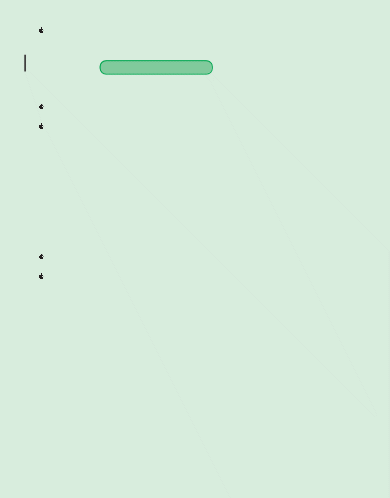 FORM
SSOCS-1 (11-9-2017)
FORM
SSOCS-1 (11-9-2017)
§,(!¤ 110700
9
14. Did these sworn law enforcement officers (including School Resource Officers*) participate in the following activities at your school*?
Check "Yes" or "No" on each line. |
||||
a. Motor vehicle traffic control |
628 |
YES |
NO |
|
1 |
2 |
|||
b. |
Security enforcement and patrol |
630 |
1 |
2 |
c. |
Maintaining student discipline |
632 |
1 |
2 |
d. |
Identifying problems in the school and proactively seeking solutions to those problems |
636 |
1 |
2 |
e. |
Training teachers and staff in school safety or crime prevention |
638 |
1 |
2 |
f. |
Mentoring students |
640 |
1 |
2 |
g. |
Teaching a law-related education course or training students (e.g., drug-related education, criminal law, or crime prevention courses) |
642 |
1 |
2 |
h. |
Recording or reporting discipline problems to school authorities |
644 |
1 |
2 |
i. |
Providing information to school authorities about the legal definitions of behavior for recording or reporting purposes (e.g., defining assault |
|
|
|
|
for school authorities) |
646 |
1 |
2 |
648 1 Yes 2 No
650
1 Yes
2 No
*Please use the definition on pages 2 and 3. |
||||
10






















 §,)*¤ 110809
§,)*¤ 110809
FORM SSOCS-1 (11-9-2017)
17.
Did these formalized policies or written documents include language defining the role of sworn law enforcement officers (including School Resource Officers*) at school in the following areas?
Check "Yes," "No," or "Don’t know" on each line.
Student discipline
Use of physical or chemical restraints (e.g., handcuffs, Tasers, Mace, pepper spray)
652
654
YES
1
 1
1
DON’T
NO KNOW
2 3
 2 3
2 3
-
c. Use of firearms*
656
1
2
3
d. Making arrests* on school grounds
658
1
2
3

 e.
Reporting
of criminal offenses to a law enforcement
e.
Reporting
of criminal offenses to a law enforcement
agency 660 1 2 3
How many of the following were present at your school* at least once a week?
If an officer works full-time across various schools in the district, please count this officer as "part-time" for your school.
Do not include security guards or other security personnel who are not sworn law enforcement in your response to this item; information on additional security staff is gathered in item 19.
If none, please place an "X" in the None box.
Number
at your school*
School Resource Officers*
Full-time
Part-time
236
238
0 None
0 None
Sworn law enforcement officers who are not School Resource Officers*
Full-time
Part-time
240
242
0 None
0 None
Aside from sworn law enforcement officers (including School Resource Officers*), how many additional security guards or security personnel were present at your school* at least once a week?
If a security guard or other security personnel works full-time across various schools in the district, please count this person as “part-time” for your school.
If none, please place an "X" in the None box. Number
at your school*
Security guards or security personnel
Full-time
Part-time
232
234
0 None
0 None
*Please use the definition on pages 2 and 3.

FORM SSOCS-1 (11-9-2017)
11
School Mental Health Services
During the 2017–18 school year, did your school provide diagnostic mental health assessments* (e.g., psychological/psychiatric diagnostics assessments) to evaluate students for mental health disorders*?
661 Include only assessments conducted by a licensed mental health professional*.
Include services that were provided at school* as well as services provided through a contract the school has with an outside provider.
1 Yes
➤
➤ GO
TO item 22
below.
Were diagnostic mental health assessment* services provided to students from your school in the following locations?
Check "Yes" or "No" on each line.
YES NO
At school*, by a school-employed or contracted mental health professional* 663 1 2
Outside of school, by a school-employed or contracted mental health
professional*
During the 2017–18 school year, did your school provide treatment* (e.g., psychotherapy, medication) to students for mental health disorders*?
665 1 2
667 Include only treatment* provided by a licensed mental health professional*.
Include services that were provided at school* as well as services provided through a contract the school has with an outside provider.
1 Yes
➤
➤ GO
TO item 24
below.
Were treatment* services provided to students from your school in the following locations?
Check "Yes" or "No" on each line.
At school*, by a school-employed or contracted mental health professional* 669
Outside of school, by a school-employed or contracted mental health
YES NO
1 2
professional*
671 1 2
During the 2017–18 school year, to what extent did the following factors limit your school’s efforts to
provide mental health services to students?
Check one response on each line.
Limits in major way
Limits in minor way
Does not limit


674
1
2
3
676
1
2
3
678
1
2
3
681
1
2
3
682
1
2
3
684
1
2
3
686
1
2
3
Inadequate access to licensed mental health professionals*

 Inadequate
funding
Inadequate
funding
 Potential
legal issues for school or district (e.g., malpractice,
insufficient
supervision,
confidentiality)
Potential
legal issues for school or district (e.g., malpractice,
insufficient
supervision,
confidentiality)Concerns about reactions from parents

 Lack
of community support for providing mental health services to
students in your
school
Lack
of community support for providing mental health services to
students in your
school
 Written
or
unwritten
policies
regarding
the
school’s
requirement to pay for the diagnostic
mental health assessment*
or treatment*
of
students
Written
or
unwritten
policies
regarding
the
school’s
requirement to pay for the diagnostic
mental health assessment*
or treatment*
of
students
 Reluctance
to label students with mental
health disorders* to
avoid stigmatizing the
child
Reluctance
to label students with mental
health disorders* to
avoid stigmatizing the
child
*Please use the definition on pages 2 and 3.
 12 §,+(¤ 111007
12 §,+(¤ 111007
FORM SSOCS-1 (11-9-2017)
Staff Training and Practices |
|||
25. During the 2017–18 school year, did your school or school district provide any of the following for classroom teachers or aides? Check "Yes" or "No" on each line. |
|||
a. Training in classroom management for teachers 266 |
YES |
NO |
|
1 |
2 |
||
b.
c.
d.
e.
f. g.
h. i.
j. k.
l. m. |
Training in school-wide discipline policies and practices related to violence* 268 |
1 |
2 |
Training in school-wide discipline policies and practices related to cyberbullying* 265 |
1 |
2 |
|
Training in school-wide discipline policies and practices related to bullying* other than cyberbullying* 267 |
1 |
2 |
|
Training in school-wide discipline policies and practices related to alcohol and/or drug use 269 |
1 |
2 |
|
Training in safety procedures (e.g., how to handle emergencies) 270 |
1 |
2 |
|
Training in recognizing early warning signs of students likely to exhibit violent behavior 272 |
1 |
2 |
|
Training in recognizing signs of self-harm or suicidal tendencies 278 |
1 |
2 |
|
Training in intervention and referral strategies for students displaying signs of mental health disorders* (e.g., depression, mood disorders, ADHD) 271 |
1 |
2 |
|
Training in recognizing physical, social, and verbal bullying* behaviors 273 |
1 |
2 |
|
Training in recognizing signs of students using/abusing alcohol and/or drugs 274 |
1 |
2 |
|
Training in positive behavioral intervention strategies 276 |
1 |
2 |
|
Training in crisis prevention and intervention 277 |
1 |
2 |
|
26. To the best of your knowledge, during the 2017–18 school year, were there any staff at your school* who legally carried a firearm* on school property?
279 1 Yes 2 No
*Please use the definition on pages 2 and 3. |
|||
13



























§,,’¤ 111106
Limitations on Crime Prevention |
|||||
27. To what extent do the following factors limit your school’s efforts to reduce or prevent crime? Check one response on each line. |
|||||
a. Lack of or inadequate teacher training in classroom management |
280 |
Limits in major way |
Limits in minor way |
Does not limit |
|
1 |
2 |
3 |
|||
b. |
Lack of or inadequate alternative placement/programs for disruptive students |
282 |
1 |
2 |
3 |
c. |
Likelihood of complaints from parents |
284 |
1 |
2 |
3 |
d. |
Lack of teacher support for school policies |
286 |
1 |
2 |
3 |
e. |
Lack of parental support for school policies |
288 |
1 |
2 |
3 |
f. |
Teachers’ fear of student retaliation |
290 |
1 |
2 |
3 |
g. |
Fear of litigation |
292 |
1 |
2 |
3 |
h. |
Inadequate funds |
294 |
1 |
2 |
3 |
i. |
Inconsistent application of school policies by faculty or staff |
296 |
1 |
2 |
3 |
j. |
Fear of district or state reprisal |
298 |
1 |
2 |
3 |
k. |
Federal, state, or district policies on disciplining special education students* |
300 |
1 |
2 |
3 |
l. |
Federal policies on discipline and safety other than those for special education students* |
302 |
1 |
2 |
3 |
m. |
State or district policies on discipline and safety other than those for special education students* |
304 |
1 |
2 |
3 |
|
|
||||
Frequency of Crime and Violence at School |
|||||
306 1 Yes 2 No
308 1 Yes 2 No
*Please use the definition on pages 2 and 3. |
|||||
2
14










































![]() §,-&¤ 111205
§,-&¤ 111205
FORM SSOCS-1 (11-9-2017)
30.
Incidents
Please record the number of incidents that occurred at school* during the 2017–18 school year for the offenses listed below. (NOTE: The number in column 1 should be greater than or equal to the number in column 2.)
If none, please place an "X" in the None box.
Please provide information on:
The number of incidents, not the number of victims or offenders.
Recorded incidents, regardless of whether any disciplinary action was taken. Recorded incidents, regardless of whether students or non-students were involved. Incidents occurring before, during, or after normal school hours.
Column 1 Column 2
Rape* or attempted rape*
Total number
of recorded incidents
Number reported to police or other law enforcement
Sexual assault* other than
310
0 None
312
0 None
rape* (include threatened rape*)
Robbery* (taking things by force)
With a weapon*
Without a weapon*
Physical attack or fight*
With a weapon*
314
318
322
0 None
0 None
0 None
316
320
324
0 None
0 None
0 None
Without a weapon*
326
0 None
328
0 None
Threats of physical attack*
With a weapon*
330
0 None
332
0 None
Without a weapon*
334
0 None
336
0 None
Theft/larceny* (taking things worth over $10 without personal confrontation)
Possession of a
firearm/explosive device*
Possession of a knife or sharp object
Distribution, possession, or use of illegal drugs
Inappropriate distribution, possession, or use of prescription drugs
Distribution, possession, or use of alcohol
Vandalism*
338
342
346
350
354
355
358
362
0 None
0 None
0 None
0 None
0 None
0 None
0 None
0 None
340
344
348
352
356
357
360
364
0 None
0 None
0 None
0 None
0 None
0 None
0 None
0 None
*Please use the definition on pages 2 and 3.
15 FORM
SSOCS-1 (11-9-2017)
FORM
SSOCS-1 (11-9-2017)
§,+(¤ 111007
During the 2017–18 school year, how many hate crimes* occurred at your school*? If none, please place an "X" in the None box.
690 Number of hate crimes*
➤
➤ GO
TO item 33
below.
To the best of your knowledge, were any of these hate crimes* motivated by the offender’s bias against the following characteristics or perceived characteristics?
Check "Yes" or "No" on each line.
If a hate crime* was motivated by multiple characteristics, answer "Yes" for each that applies.
Race or color
National origin or ethnicity
Sex
YES NO
692 1 2
694 1 2
696 1 2
Religion 698 1 2
Disability (e.g., physical, mental, and learning disabilities) 700 1 2
Sexual orientation* 702 1 2
Gender identity* 704 1 2
To the best of your knowledge, during the 2017–18 school year, have there been any incidents of
sexual misconduct* between a staff member and a student at your school*?
Report on misconduct between staff and students whether or not the incidents occurred at school or away from school.
Sexual assault* and rape* are both forms of sexual misconduct. Therefore, some incidents of staff-student behavior may be reported in response to items 30a and 30b as well as item 33.
705 1
2
Yes No
Please record the number of arrests* that occurred at your school* during the 2017–18 school year. Please include all arrests* that occurred at school*, regardless of whether a student or non-student was arrested.
688 1 None
2 1–5
3 6–10
4 11 or more
*Please use the definition on pages 2 and 3.
16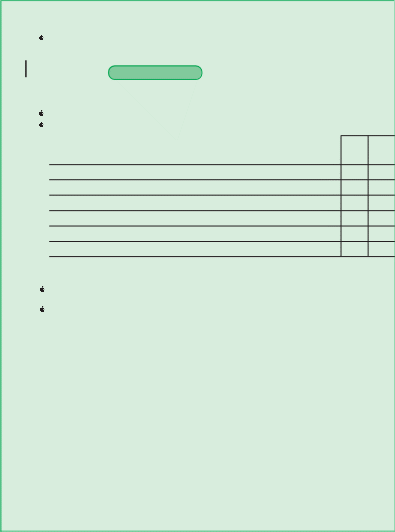 §,,’¤ 111106
§,,’¤ 111106
FORM SSOCS-1 (11-9-2017)
-
Disciplinary Problems and Actions
35. To the best of your knowledge, how often do the following types of problems occur at your school*?
Check one response on each line.
a. Student racial/ethnic tensions
374
Happens daily
Happens at least once a week
Happens at least once a month
Happens on occasion
Never happens
1
2
3
4
5
b.
Student bullying*
376
1
2
3
4
5
c.
Student sexual harassment*
of other students
378
1
2
3
4
5
d.
Student harassment* of other
students based on sexual 381
orientation*
1
2
3
4
5
e.
Student harassment* of other
students based on gender identity* 383
1
2
3
4
5
f.
Student harassment*
of other students based on religion
385
1
2
3
4
5
g.
Student harassment* of other students based on disability (e.g., physical, 387
mental, and learning disabilities)
1
2
3
4
5
h.
Widespread disorder in classrooms
382
1
2
3
4
5
i.
Student verbal abuse of teachers
380
1
2
3
4
5
j.
Student acts of disrespect for teachers other than verbal abuse
384
1
2
3
4
5
k.
Gang* activities
386
1
2
3
4
5
36. To the best of your knowledge, thinking about problems that can occur anywhere (both at your school* and away from school), how often do the following occur?
Check one response on each line.
a. Cyberbullying* among students who attend your school
389
Happens daily
Happens at least once a week
Happens at least once a month
Happens on occasion
Never happens
1
2
3
4
5
b.
c.
School environment is affected
by cyberbullying* 391
1
2
3
4
5
Staff resources are used to deal
with cyberbullying* 393
1
2
3
4
5
*Please use the definition on pages 2 and 3.
17 FORM
SSOCS-1 (11-9-2017)
FORM
SSOCS-1 (11-9-2017)
§,-&¤ 111205
During the 2017–18 school year, did your school allow for the use of the following disciplinary actions? If "yes," were the actions used this school year?
Removal with no continuing school services for at least the remainder of the school year
Removal with school-provided tutoring/home instruction for at least the remainder of the school year
Transfer to a specialized school* for disciplinary reasons
Transfer to another regular school for disciplinary reasons
Out-of-school suspension or removal for less than the remainder of the school year
With no curriculum/services provided
With curriculum/services provided
Does your school allow for use of the following?
YES NO
390 1 2
394 1 2
398 1 2
402 1 2




If “Yes,” was the action used this school year?
YES NO
392 1 2
396 1 2
400 1 2
404 1 2




406
1
2
408
1
2
410
1
2
412
1
2
414
1
2
416
1
2
418
1
2
420
1
2
422
1
2
424
1
2
426
1
2
428
1
2
430
1
2
432
1
2
434
1
2
436
1
2
438
1
2
440
1
2
442
1
2
444
1
2
446
1
2
448
1
2
450
1
2
452
1
2
454
1
2
456
1
2
In-school suspension for less than the remainder of the school year



 With
no curriculum/services
provided
With
no curriculum/services
provided


 With
curriculum/services
provided
With
curriculum/services
provided



 Referral
to a school
counselor
Referral
to a school
counselor


 Assignment
to a program (during school
hours) designed to reduce disciplinary problems
Assignment
to a program (during school
hours) designed to reduce disciplinary problems


 Assignment
to a program (outside of school hours) designed to reduce
disciplinary problems
Assignment
to a program (outside of school hours) designed to reduce
disciplinary problems


 Loss
of school bus privileges due to misbehavior
Loss
of school bus privileges due to misbehavior


 Corporal
punishment
Corporal
punishment


 Placement
on school probation with consequences if another incident
occurs
Placement
on school probation with consequences if another incident
occurs



 Detention
and/or Saturday
school
Detention
and/or Saturday
school


 Loss
of student
privileges
Loss
of student
privileges


 Requirement
of participation in community service
Requirement
of participation in community service
*Please use the definition on pages 2 and 3.
18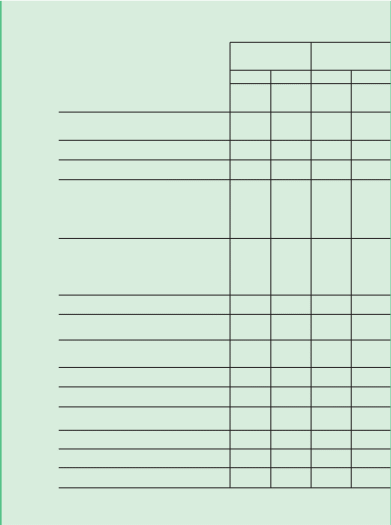 §,.%¤ 111304
§,.%¤ 111304
FORM SSOCS-1 (11-9-2017)
During the 2017–18 school year, how many students were involved in committing the
following offenses, and how many of the following disciplinary actions were taken in response?
If none, please place an "X" in the None box.
Please follow these guidelines when determining the number of offenses and disciplinary actions:
If more than one student was involved in an incident, please count each student separately when providing the number of disciplinary actions.
If a student was disciplined more than once, please count each offense separately (e.g., a student who was suspended five times would be counted as five suspensions).
If a student was disciplined in two different ways for a single infraction (e.g., the student was both suspended and referred to counseling), count only the most severe disciplinary action that was taken.
If a student was disciplined in one way for multiple infractions, record the disciplinary action for only the most serious offense.
Number of disciplinary actions taken in response to offense
Use/possession of a firearm/ explosive device*
Total students involved in recorded offenses (regardless of disciplinary action)

 Removals
with no
continuing
school
services
for
at
least
the
remainder of the
school
year
Removals
with no
continuing
school
services
for
at
least
the
remainder of the
school
year
Transfers to specialized schools*
Out-of-school suspensions lasting 5 or more days, but less than the remainder of the school year
Other disciplinary action (e.g., suspension for less than 5 days, detention, etc.)














458
460
462
464
466
0
None
0
None
0
None
0
None
0
None
468
470
472
474
476
0
None
0
None
0
None
0
None
0
None
478
480
482
484
486
0
None
0
None
0
None
0
None
0
None
488
490
492
494
496
0
None
0
None
0
None
0
None
0
None
498
500
502
504
506
0
None
0
None
0
None
0
None
0
None
Use/possession of a weapon* other than a firearm/ explosive device*


 Distribution,
Distribution,




 possession,
or use of illegal drugs
possession,
or use of illegal drugs


 Distribution,
Distribution,




 possession,
or use of alcohol
possession,
or use of alcohol


 Physical
attacks or
fights*
Physical
attacks or
fights*
During the 2017–18 school year, how many of the following occurred? If none, please place an "X" in the None box.
Total number
Students were removed from your school without continuing services for at least the remainder of the school year for disciplinary reasons. (NOTE: This number should be greater than or equal to the sum of entries in item 38, column 2.)
Students were transferred to specialized schools* for disciplinary reasons. (NOTE: This number should be greater than or equal to the sum of entries in item 38, column 3.)
518
520
0 None
0 None
*Please use the definition on pages 2 and 3.
19 FORM
SSOCS-1 (11-9-2017)
FORM
SSOCS-1 (11-9-2017)
§,/$¤ 111403
School Characteristics: 2017–18 School Year
As of October 1, 2017, what was your school’s total enrollment?
41.
522 Students
What percentage of your current students fit the following criteria?
If none, please place an "X" in the None box.
Percent of students
Eligible for free or reduced-price lunch
English language learner (ELL)
524
0
526
%
None
%
c. Special education students*
528
0 None
%
0 None
d. Male
530
%
0 None
42.
What is your best estimate of the percentage of your current students who meet the following criteria?
If none, please place an "X" in the None box.
Percent of students
Below the 15th percentile on standardized tests
Likely to go to college after high school
Consider academic achievement to be very important
532
534
536
%
0 None
%
0 None
%
0 None
43.
How many classroom changes do most students make in a typical day?
Count going to lunch and then returning to the same or a different classroom as two classroom changes. Do not count morning arrival or afternoon departure.
If none, please place an "X" in the None box.
538 Typical number of classroom changes
0 None
*Please use the definition on pages 2 and 3.

20
FORM SSOCS-1 (11-9-2017)
How would you describe the crime level in the area(s) in which your students live? Check one response.
560 1
2
3
4
High level of crime Moderate level of crime Low level of crime
Students come from areas with very different levels of crime
How would you describe the crime level in the area where your school is located? Check one response.
562 1
2
3
High level of crime Moderate level of crime Low level of crime
Which of the following best describes your school? Check one response.
564 1
2
3
4
5
Regular public school Charter school
Other – Please specify
565
What is your school’s average daily attendance?
Percent of students present
568 %
0 None
48.
During the 2017–18 school year, how many students transferred to or from your school after the start of the school year? Please report on the total mobility, not just transfers due to disciplinary actions. (NOTE: This number should be greater than or equal to the number of students who were transferred for disciplinary reasons, as reported in item 39b.)
If a student transferred more than once in the school year, count each transfer separately. If none, please place an "X" in the None box.
Transferred to the school
570
0 None
b. Transferred from the school
572
0 None
21 FORM
SSOCS-1 (11-9-2017)
FORM
SSOCS-1 (11-9-2017)
§,1"¤ 111601
Please provide the following information:
Please provide the following dates:
Start date for your 2017–18 school year
End date for your 2017–18 school year
Date you completed the questionnaire
574
576
578
Month Day
/ /2017
/ /2018
/ /2018
Is the correct grade range for this school?
022 1
2
Yes
No
➤
Which
of the following grades are offered in this school?
Check all that apply.
-
024
1

Prekindergarten
026
1
Kindergarten
028
1

1st
030
1
2nd
032
1

3rd
034
1
4th
036
1

5th
038
1
6th
040
1

7th
042
1
8th
044
1

9th
046
1
10th
048
1

11th
050
1
12th
052
1

Ungraded
Name of person completing form
010
012
Telephone number
Area code Number
Title/position
Check one response.
014 1 Principal
2 Vice-principal or disciplinarian
3 Other – Please specify
015

22
FORM SSOCS-1 (11-9-2017)
Number of years at this school
016
Best days and times to reach you (in case we have further questions)
018
E-mail address
020
How long did it take you to complete this form, not counting interruptions?
Please record the time in minutes (e.g., 55 minutes, 65 minutes).
580 Minutes

23
§,3*¤ 111809
Please return your completed questionnaire in the enclosed postage-paid envelope or mail it to:
U.S. Census Bureau
Attn: DCB/PCSPU, Building 60A 1201 E 10th Street Jeffersonville, IN 47132-0001
Thank you very much for your participation in this survey. If you have any questions, please contact us, toll–free, at: 1–888–595–1332 or by e-mail at: [email protected]
To learn more about this survey and to access reports from earlier collections, see the School Survey on Crime and Safety (SSOCS) website at:
https://nces.ed.gov/surveys/ssocs
Additional data collected by the National Center for Education Statistics (NCES) on a variety of topics in elementary, secondary, postsecondary, and international education are available from the NCES website at:
https://nces.ed.gov
For additional data collected by various Federal agencies, including the Department of Education, visit the Federal Statistics clearinghouse at:
https://fedstats.sites.usa.gov
24 §,4)¤ 111908
§,4)¤ 111908
FORM SSOCS-1 (11-9-2017)
U.S. DEPARTMENT OF EDUCATION
NATIONAL CENTER FOR EDUCATION STATISTICS
OMB No. 1850-0761; Approval Expires 07/31/2020
Collected by:
U.S. DEPARTMENT OF COMMERCE
Economics and Statistics Administration
U.S. CENSUS BUREAU
SCHOOL SURVEY ON CRIME AND SAFETY
2019–20 SCHOOL YEAR
This survey is designed to be completed by the principal or the person(s) most knowledgeable about school crime and policies to provide a safe environment.
(Please correct any errors in name, address, and ZIP Code.)
The National Center for Education Statistics (NCES), within the U.S. Department of Education, is authorized to conduct this survey by the Education Sciences Reform Act of 2002 (ESRA 2002, 20 U.S.C. §9543).
All of the information you provide may be used only for statistical purposes and may not be disclosed, or used, in identifiable form for any other purpose except as required by law (20 U.S.C. §9573 and 6 U.S.C. §151). Reports of the findings from the survey will not identify participating districts, schools, or staff. Individual responses will be combined with those from other participants to produce summary statistics and reports.
PLEASE RESPOND BY:
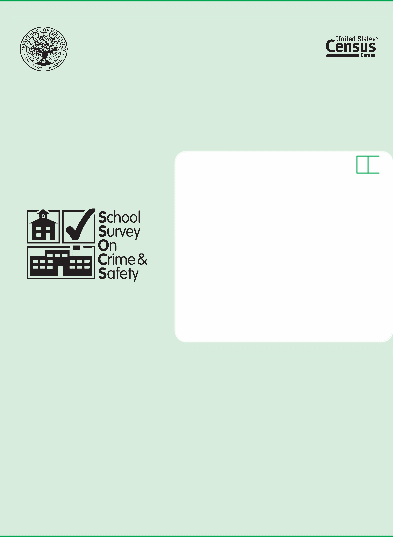 FORM
SSOCS-1
FORM
SSOCS-1
(09-03-2019) Draft 8
§,$%¤
110106
DEFINITIONS
The following words are bolded and marked by an asterisk (*) wherever they appear in the questionnaire. Please detach and use these definitions as you respond.
Active shooter – one or more individuals actively engaged in killing or attempting to kill people in a populated area; in most cases, active shooters use firearm(s).
Alternative school – a school that addresses the needs of students that typically cannot be met in a regular school program and is designed to meet the needs of students with academic difficulties, students with discipline problems, or both students with academic difficulties and discipline problems.
Arrest – the act of detaining in legal custody. An "arrest" is the deprivation of a person’s liberty by legal authority in response to a criminal charge.
At school/at your school – activities happening in school buildings, on school grounds, on school buses, and at places that hold school-sponsored
events or activities. Unless otherwise specified, this refers to normal school hours or to times when school activities or events were in session.
Bullying – any unwanted, aggressive behavior(s) by another youth or group of youths that involves an observed or perceived power imbalance and is repeated multiple times or is highly likely to be repeated. Bullying occurs among youth who are not siblings or current dating partners.
Children with disabilities – children having intellectual disability; hearing impairment, including deafness; serious emotional disturbance; orthopedic impairment; autism; traumatic brain injury; developmental delay; other health impairment; specific learning disability; deaf-blindness; or multiple disabilities and who, by reason thereof, receive special education and related services under the Individuals with Disabilities Education
Act (IDEA) according to an Individual Education Program (IEP), Individualized Family Service Plan (IFSP), or services plan.
Cyberbullying – bullying that occurs when willful and repeated harm is inflicted through the use of computers, cell phones, or other electronic devices.
Diagnostic mental health assessment – an evaluation conducted by a mental health professional that identifies whether an individual has one or more mental health diagnoses. This is in contrast to an educational assessment, which does not focus on clarifying a student’s mental health diagnosis.
Evacuation – a procedure that requires all students and staff to leave the building. The evacuation plan may encompass relocation procedures and include backup buildings to serve as emergency shelters.
Evacuation also includes “reverse evacuation,” a procedure for schools to return students to the building quickly if an incident occurs while students are outside.
Firearm or explosive device – any weapon that is designed to (or may readily be converted to) expel a projectile by the action of an explosive. This includes guns, bombs, grenades, mines, rockets, missiles, pipe bombs, or similar devices designed to explode and capable of causing bodily harm or property damage.
Gang – an ongoing loosely organized association of three or more persons, whether formal or informal, that has a common name, signs, symbols, or colors, whose members engage, either individually or collectively, in violent or other forms of illegal behavior.
Gender identity – one’s inner sense of one’s own gender, which may or may not match the sex assigned at birth.
Harassment – conduct that is unwelcome and denies or limits a student’s ability to participate in or benefit from a school’s education program. All students can be victims of harassment and the harasser can share the same characteristics of the victim. The conduct can be verbal, non-verbal, or physical and can take many forms, including verbal acts and namecalling, as well as non-verbal conduct, such as graphic and written statements, or conduct that is physically threatening, harmful, or humiliating.
Hate crime – a committed criminal offense that is motivated, in whole or in part, by the offender’s bias(es) against a race, national origin or ethnicity, religion, disability, sexual orientation, gender, or gender identity; also known as bias crime.
Lockdown – a procedure that involves securing school buildings and grounds during incidents that pose an immediate threat of violence in or around the school.
Mental health disorders – collectively, all diagnosable mental disorders or health conditions that are characterized by alterations in thinking, mood, or behavior (or some combination thereof) associated with distress and/or impaired functioning.
Please tear off this "definitions"
sheet to use while completing the survey. FORM
SSOCS-1
FORM
SSOCS-1
§,#&¤ 110205 2
Mental health professionals – mental health services are provided by several different professions, each of which has its own training and areas of expertise. The types of licensed professionals who may provide mental health services include psychiatrists, psychologists, psychiatric or mental health nurse practitioners, psychiatric or mental health nurses, clinical social workers, and professional counselors.
Physical attack or fight – an actual and intentional touching or striking of another person against his or her will, or the intentional causing of bodily harm to an individual.
Rape – forced sexual intercourse (vaginal, anal, or oral penetration). This includes sodomy and penetration with a foreign object. All students,
regardless of sex or gender identity, can be victims of rape.
Restorative practices – a formal mediation process led by a facilitator that brings affected parties of a problem together to explore what happened, reflect on their roles, find a solution, and ultimately restore harmony to individual relationships and the larger community.
Robbery (taking things by force) – the taking or attempting to take anything of value that is owned by another person or organization, under confrontational circumstances, by force or threat of force or violence and/or by putting the victim in
fear. A key difference between robbery and theft or larceny is that robbery involves a threat or assault.
School Resource Officer (SRO) – a sworn law enforcement officer with arrest authority, who has specialized training and is assigned to work in collaboration with school organizations.
Sexual assault – an incident that includes threatened rape, fondling, indecent liberties, or child molestation. All students, regardless of sex
or gender identity, can be victims of sexual assault. Classification of these incidents should take into consideration the age and developmentally appropriate behavior of the offender(s).
Sexual harassment – conduct that is unwelcome, sexual in nature, and denies or limits a student’s ability to participate in or benefit from a school’s education program. All students, regardless of sex or gender identity, can be victims of sexual harassment, and the harasser and the victim can be of the same sex. The conduct can be verbal, non-verbal, or physical and can take many forms, including verbal acts and name-calling, as well as nonverbal conduct, such as graphic and written statements, or conduct that is physically threatening, harmful, or humiliating.
Sexual misconduct – any act, including, but not limited to, any verbal, nonverbal, written or electronic communication or physical activity,
directed toward or with a student regardless of the age of the student that is designed to establish a romantic or sexual relationship with the student.
School staff have power over students by virtue of their position, thus student-staff relationships are not equal and students cannot be consenting parties to romantic or sexual relationships.
Sexual orientation – one’s emotional or physical attraction to the same and/or opposite sex.
Shelter-in-place – a procedure that requires all students and staff to remain indoors because it is safer inside the building or a room than outside. Depending on the threat or hazard, students and staff may be required to move to rooms that can be sealed (such as in the event of a chemical or biological hazard) or without windows, or to a weather shelter (such as in the event of a tornado).
Theft or larceny (taking things worth over $10 without personal confrontation) – the unlawful taking of another person’s property without personal confrontation, threat, violence, or bodily harm. This includes pocket picking, stealing a purse or backpack (if left unattended or no force was used to take it from owner), theft from a building, theft from a motor vehicle or of motor vehicle parts or accessories, theft of a bicycle, theft from a vending machine, and all other types of thefts.
Threat assessment – a formalized process of identifying, assessing, and managing students who may pose a threat of targeted violence in schools.
Treatment – a clinical intervention addressed at lessening or eliminating the symptoms of a mental health disorder. This may include psychotherapy, medication treatment, and/or counseling.
Vandalism – the willful damage or destruction of school property, including bombing, arson, graffiti, and other acts that cause property damage. This includes damage caused by computer hacking.
Violence – actual, attempted, or threatened fight or assault.
Weapon – any instrument or object used with the intent to threaten, injure, or kill. This includes look-alikes if they are used to threaten others.
Please tear off this "definitions"
sheet to use while completing the survey. FORM
SSOCS-1
FORM
SSOCS-1
§,#&¤ 110205 3
SURVEY INSTRUCTIONS:
For most questions, please mark the box that best reflects your school’s circumstances. Please mark your response with an "X".
Some questions ask for counts or percents. Please place an "X" in the None box, rather than leaving the item blank, if the number of such items at your school is zero.
Defined terms are bolded and marked with an asterisk (*) throughout the survey. A removable "definitions" sheet is printed on pages 2 and 3 to use as a reference while filling out the questionnaire.
This survey refers to the 2019–20 school year. Please report for the school year to date.
Please have this questionnaire filled out by the person(s) most knowledgeable about school crime and policies used to provide a safe environment.
Please keep a copy of the completed questionnaire for your records.
WHERE SHOULD I RETURN MY COMPLETED QUESTIONNAIRE?
Please return your completed questionnaire in the enclosed postage-paid envelope or mail it to:
U.S. Census Bureau
ATTN: DCB/PCSPU, Building 60A 1201 E. 10th Street
Jeffersonville, IN 47132-0001
If you have any questions about this questionnaire, please contact the U.S. Census Bureau at: 1-888-595-1332 or at [email protected].
Paperwork Burden Statement
According to the Paperwork Reduction Act of 1995, no persons are required to respond to a collection of information unless it displays a valid OMB control number. The valid OMB control number for this voluntary information collection is 1850-0761. The time required to complete this information collection is estimated to average 45 minutes per response, including the time to review instructions, search existing data resources, gather the data needed, and complete and review the information collection. If you have any comments concerning the accuracy of the time estimate, suggestions for improving this collection, or comments or concerns about the contents or the status of your individual submission of this questionnaire, please e-mail: [email protected], or write directly to: School Survey on Crime and Safety (SSOCS), National Center for Education Statistics, Potomac Center Plaza, 550 12th Street SW, Room #4036, Washington, DC 20202.
 4 §,$%¤
110304
4 §,$%¤
110304
FORM SSOCS-1
School Practices and Programs
During the 2019–20 school year, was it a practice of your school to do the following?
If your school changed its practices during the school year, please answer regarding your most recent practice.
YES
NO
1
2
1

2

1

2

1
2
1
2
1
2
1

2

1

2

1
2
1
2
1
2
1
2
1
2
1

2

1

2

1
2
1
2
1
2
1

2

1
2
1

2

Check "Yes" or "No" on each line.
Require visitors to sign or check in and wear badges 110



 Control
access to school buildings during school hours (e.g., locked or
monitored doors, loading docks)
112
Control
access to school buildings during school hours (e.g., locked or
monitored doors, loading docks)
112
 Control
access to school grounds during school hours
(e.g.,
locked or monitored gates)
114
Control
access to school grounds during school hours
(e.g.,
locked or monitored gates)
114Equip classrooms with locks so that doors can be locked from the inside 121


Close the campus for most or all students during lunch 122


Provide school lockers to students 138



 Have
“panic button(s)” or silent alarm(s) that directly
connect to law enforcement
in
the
event
of
an
incident
139
Have
“panic button(s)” or silent alarm(s) that directly
connect to law enforcement
in
the
event
of
an
incident
139
 Provide
an electronic notification system that automatically notifies
parents
in
case
of
a
school-wide
emergency
141
Provide
an electronic notification system that automatically notifies
parents
in
case
of
a
school-wide
emergency
141Require faculty and staff to wear badges or picture IDs 144


Use one or more security cameras to monitor the school 146


Provide two-way radios to any staff 150


Require metal detector checks on students every day 116


Perform one or more random metal detector checks on students 120



 Perform
one or more random sweeps (e.g., locker checks, dog sniffs) for
contraband (e.g., drugs or weapons*)
125
Perform
one or more random sweeps (e.g., locker checks, dog sniffs) for
contraband (e.g., drugs or weapons*)
125
 Require
drug testing for students participating in athletics or other
extracurricular activities
129
Require
drug testing for students participating in athletics or other
extracurricular activities
129Require students to wear uniforms 134


Enforce a strict dress code 136


Require clear book bags or ban book bags on school grounds 140



 Provide
a structured anonymous threat reporting system (e.g., online
submission, telephone hotline, or written submission via drop box)
143
Provide
a structured anonymous threat reporting system (e.g., online
submission, telephone hotline, or written submission via drop box)
143Require students to wear badges or picture IDs 142



 Prohibit
non-academic use of cell phones or smartphones during
school hours
153
Prohibit
non-academic use of cell phones or smartphones during
school hours
153
*A removable "definitions" sheet is printed on pages 2 and 3.
 FORM
SSOCS-1
FORM
SSOCS-1
§,%$¤ 110403 5
6 §,&#¤ 110502
FORM SSOCS-1
During the 2019–20 school year, did your school have a threat assessment* team or any other formal group of persons to identify students who might be a potential risk for violent or harmful behavior (toward themselves or others)? 600
1 Yes
2 No
During the 2019–20 school year, did your school have any recognized student groups with the following purposes?
Acceptance of sexual orientation* and gender identity* of students (e.g., Gay-Straight Alliance) 604
YES NO
1 2
Acceptance of students with disabilities (e.g., Best Buddies) 606 1 2
Acceptance of cultural or religious diversity (e.g., Cultural Awareness Club) 608 1 2
Parent and Community Involvement at School
Which of the following does your school do to involve or help parents?
Have a formal process to obtain parental input on policies related to school crime and discipline 190
Provide training or technical assistance to parents in dealing with students’ problem behavior 192
YES NO
1 2
1 2
During the 2019–20 school year, were any of the following community and outside
groups involved in your school’s efforts to promote a safe school? YES NO
Parent groups 204 1 2
Social service agencies 206 1 2
2
1
Juvenile justice agencies 208 1 2
2
1
d. Law enforcement agencies 210
Civic organizations or service clubs
214
f.
h. Religious organizations 218
1
2
*A removable "definitions" sheet is printed on pages 2 and 3.
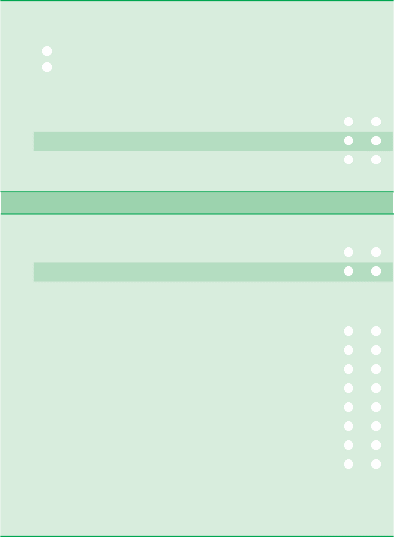 FORM
SSOCS-1
FORM
SSOCS-1
§,%$¤ 110601 7
School Security Staff
During the 2019–20 school year, did you have any sworn law enforcement officers (including
School Resource Officers*) present at your school* at least once a week? 610
Do not include security officers or other security personnel who are not sworn law enforcement in response to items 9-15; information on additional security staff is gathered in item 16.
1 Yes
2 No ➔ GO TO item 16 on page 10.
Were sworn law enforcement officers (including School Resource Officers*) used at least once a week in or around your school at the following times?
YES NO
2
1
While students were arriving or leaving 614 1 2
b. At selected school activities (e.g.,
athletic and social events, open houses) 616
Did any of the sworn law enforcement officers (including School Resource Officers*) at your school* routinely:
Carry physical restraints (e.g., handcuffs, Tasers) 621
Carry chemical aerosol sprays (e.g., Mace, pepper spray) 622
YES NO
1 2
1 2
Carry a firearm* 624 1 2
d. Wear a body camera 626
1
2
*A removable "definitions" sheet is printed on pages 2 and 3.
 8 §,%$¤
110601
8 §,%$¤
110601
FORM SSOCS-1
the following activities at your school*?
YES NO
Motor vehicle traffic control 628 1 2
Security enforcement and patrol 630 1 2
Maintaining student discipline 632 1 2
Identifying problems in the school and proactively seeking solutions 1 2
to those problems 636
Training teachers and staff in school safety or crime prevention 638 1 2
Mentoring students 640 1 2
Teaching a law-related education course or training students 1 2
(e.g., drug-related education, criminal law, or crime prevention courses) 642
Recording or reporting discipline problems to school authorities 644 1 2
Providing information to school authorities about the legal definitions of 1 2
behavior for recording or reporting purposes (e.g., defining assault for
school authorities)
646
During the 2019–20 school year, did your school or school district have any formalized policies or written documents (e.g., Memorandum of Understanding, Memorandum of Agreement) that outlined the roles, responsibilities, and expectations of sworn law enforcement officers (including School Resource Officers*) at school*? 650
1 Yes ➔
GO TO item 14 below.
2 No ➔ GO TO item 15 on page 10.
YES NO DON’T
KNOW
1
2
3
1
2
3

1
2
3
1
2
3
1
2
3
Did these formalized policies or written documents include language defining the role of sworn law enforcement officers (including School Resource Officers*) at school* in the following areas?
Student discipline
652 ![]()
![]()
![]()


 Use
of physical restraints (e.g., handcuffs, Tasers) or chemical
aerosol sprays (e.g., Mace, pepper spray)
654
Use
of physical restraints (e.g., handcuffs, Tasers) or chemical
aerosol sprays (e.g., Mace, pepper spray)
654Use of firearms* 656



Making arrests* on school grounds 658



Reporting of criminal offenses to a law enforcement agency 660



*A removable "definitions" sheet is printed on pages 2 and 3.
 FORM
SSOCS-1
FORM
SSOCS-1
§,(!¤ 110700 9
If an officer works full-time across various schools in the district, please count this officer as "Part-time" for your school.
If none, please place an "X" in the None box.
School Resource Officers*
Number
at your school*
None
Full-time
236 0
Part-time 238 0
Sworn law enforcement officers who are not School Resource Officers*
-
i. Full-time
240
0
ii. Part-time
242
0
Aside from sworn law enforcement officers (including School Resource Officers*), how many additional security officers or security personnel were present at your school* at least once a week?
If a security officer or other security personnel works full-time across various schools in the district, please count this person as “Part-time” for your school.
Security officers or security personnel
Number
at your school*
None
Full-time
Part-time
232 0
234 0
School Mental Health Services
During the 2019–20 school year, did your school provide diagnostic mental health assessments* (e.g., psychological/psychiatric diagnostics assessments) to evaluate students for mental health disorders*? 661
Include only assessments conducted by a licensed mental health professional*.
Include services that were provided at school* as well as services provided through a contract the school has with an outside provider.
1 Yes
2 No ➔ GO TO item 19 on page 11.
*A removable "definitions" sheet is printed on pages 2 and 3.
 10 §,)*¤
110809
10 §,)*¤
110809
FORM SSOCS-1
![]()
![]()
![]()
![]()
![]()
![]()
 FORM
SSOCS-1
FORM
SSOCS-1
§,*)¤ 110908 11
Staff Training and Practices
YES
NO
1
2
1

2

1

2

1

2

1

2

1
2
1

2

1
2
1

2

1
2
1
2
1
2
1
2
During the 2019–20 school year, did your school or school district provide any of the following for classroom teachers or aides?
Training in classroom management for teachers
266 ![]()
![]()
![]()
![]() b.
Training in school-wide discipline policies and practices related to
b.
Training in school-wide discipline policies and practices related to
violence*
268

 Training
in
school-wide
discipline
policies
and
practices
related
to
Training
in
school-wide
discipline
policies
and
practices
related
to
cyberbullying* 265

 Training
in
school-wide
discipline
policies
and
practices
related
to
Training
in
school-wide
discipline
policies
and
practices
related
to
bullying* other than cyberbullying* 267

 Training
in
school-wide
discipline
policies
and
practices
related
to
Training
in
school-wide
discipline
policies
and
practices
related
to
alcohol and/or drug use
269
Training in safety procedures (e.g., how to handle emergencies) 270



 Training
in
recognizing
early
warning
signs
of
students
likely
to
Training
in
recognizing
early
warning
signs
of
students
likely
to
exhibit violent behavior
272
h. Training in recognizing signs of self-harm or suicidal tendencies
278 ![]()
![]()
![]()
![]() i. Training
in intervention and referral strategies for students displaying
signs of
mental health disorders*
(e.g., depression, mood disorders,
ADHD)
271
i. Training
in intervention and referral strategies for students displaying
signs of
mental health disorders*
(e.g., depression, mood disorders,
ADHD)
271
j. Training in recognizing physical, social, and verbal bullying* behaviors
273 ![]()
![]()
Training in recognizing signs of students using/abusing alcohol and/or drugs 274


Training in positive behavioral intervention strategies 276


Training in crisis prevention and intervention
277 ![]()
![]()
23. Aside from sworn law enforcement officers (including School Resource Officers*) or other security officers or personnel who carry firearms, during the 2019–20 school year, were there any
staff at your school* who legally carried a firearm* on school property?
279
1 Yes
2 No
*A removable "definitions" sheet is printed on pages 2 and 3.
 12 §,+(¤
111007
12 §,+(¤
111007
FORM SSOCS-1
Limitations on Crime Prevention
To what extent do the following factors limit your school’s efforts to reduce or prevent crime?
Limits in major way
Limits in minor way
Does not limit
1

2

3

1

2

3

1
2
3
1
2
3
1
2
3
1
2
3
1
2
3
1
2
3
1
2
3
Check one response on each line.


 Lack
of or inadequate teacher training in classroom management
280
Lack
of or inadequate teacher training in classroom management
280

 Lack
of or inadequate alternative placement or programs for disruptive
students
282
Lack
of or inadequate alternative placement or programs for disruptive
students
282
Likelihood of complaints from parents
284 ![]()
![]()
![]()
Lack of teacher support for school policies 286



Lack of parental support for school policies
Teachers’ fear of student retaliation 290
288 ![]()
![]()
![]()
![]()
![]()
![]()
Fear of litigation 292



Inadequate funds 294





 Inconsistent
application of school policies
by
Inconsistent
application of school policies
by
faculty or staff
296
 FORM
SSOCS-1
FORM
SSOCS-1
§,$%¤
111106 13
Incidents
Please record the number of incidents that occurred at school* during the 2019–20 school year for the offenses listed below. (NOTE: The number in column 1 should be greater than or equal to the number in column 2.)
Please provide information on:
The number of incidents, not the number of victims or offenders.
Recorded incidents, regardless of whether any disciplinary action was taken.
Recorded incidents, regardless of whether students or non-students were involved.
Incidents occurring before, during, or after normal school hours.
Rape* or attempted rape*
Sexual assault* other than rape*
(include threatened rape*)
Robbery* (taking things by force)
With a weapon*
Without a weapon*
Physical attack or fight*
With a weapon*
Column 1 Total number
of recorded incidents





None





Column 2 Number reported to sworn
law enforcement
310
0
312
0
314
0
316
0
318
0
320
0
322
0
324
0
326
0
328
0
330
0
332
0
334
0
336
0
338
0
340
0
342
0
344
0
346
0
348
0
350
0
352
0
354
0
356
0
355
0
357
0
358
0
360
0
362
0
364
0 






 Without
a
weapon*
Without
a
weapon*

 Threats
of physical
attack*
Threats
of physical
attack*With a weapon*


 Without
a
weapon*
Without
a
weapon*

 Theft
or larceny* (taking
things worth over $10 without personal
confrontation)
Theft
or larceny* (taking
things worth over $10 without personal
confrontation)

 Possession
of
a
Possession
of
a
firearm or explosive device*


 Possession
of a knife or sharp
object
Possession
of a knife or sharp
object

 Distribution,
possession, or use of illegal
drugs
Distribution,
possession, or use of illegal
drugs

 Inappropriate
distribution, possession, or use of prescription
drugs
Inappropriate
distribution, possession, or use of prescription
drugs

 Distribution,
possession, or use of
alcohol
Distribution,
possession, or use of
alcohol


 Vandalism*
Vandalism*
*A removable "definitions" sheet is printed on pages 2 and 3.
 14 §,-&¤
14 §,-&¤
111205
FORM SSOCS-1
During the 2019–20 school year, how many hate crimes* occurred at your school*? Number of hate crimes*
690
0 None ➔ GO TO item 28 below.
To the best of your knowledge, were any of these hate crimes* motivated by the offender’s bias against the following characteristics or perceived characteristics?
If a hate crime* was motivated by multiple characteristics, answer "Yes" for
each that applies.
Race 692
National origin or ethnicity 694
YES NO
1 2
1 2
c. Sex 696 1 2
Religion 698 1 2
Disability (e.g., physical, mental, and learning disabilities) 700 1 2
Sexual orientation* 702 1 2
Gender identity* 704 1 2
To the best of your knowledge, during the 2019–20 school year, have there been any incidents of
sexual misconduct* between a staff member and a student at your school*?
705
Report on misconduct between staff and students whether or not the incidents occurred at school* or away from school.
Sexual assault* and rape* are both forms of sexual misconduct. Therefore, some incidents of staff-student behavior may be reported in response to items 25a and 25b as well as item 28.
1 Yes
2 No
Please select the number of arrests*, including both students and non-students, that occurred at
your school* during the 2019–20 school year.
688
1 None
2 1 - 5
3 6 - 10
4 11 or more
*A removable "definitions" sheet is printed on pages 2 and 3.
 FORM
SSOCS-1
FORM
SSOCS-1
§,+(¤ 111007 15
Disciplinary Problems and Actions
To the best of your knowledge, how often do the following types of problems occur at your school*?
Student racial or ethnic tensions 374
Student bullying* 376
Student sexual harassment* of other students 378
Student harassment* of other students based on sexual orientation* 381
Student harassment* of other students based on gender identity* 383
Student harassment* of other students
Happens daily
1
1
1
2
3
4
5
1
2
3
4
5
1
2
3
4
5
1
2
3
4
5
1
2
3
4
5
1
2
3
4
5
1
2
3
4
5
1
2
3
4
5
![]()
![]()
![]()
![]()
![]()
![]()
![]()
![]()
![]()
Happens at least once a week
2
2
2
![]()
Happens at least once a month
3
3
3
![]()
Happens on occasion
4
4
4
![]()
Never happens
5
5
5
based on religion
385



 Student
harassment*
of
other
students
Student
harassment*
of
other
students
based on disability (e.g.
physical,
mental ![]()
![]()
![]()
![]() and learning
disabilities) 387
and learning
disabilities) 387
Widespread disorder in classroom 382




Student verbal abuse of teachers 380







 Student
acts of disrespect for
teachers
Student
acts of disrespect for
teachers
other than verbal abuse
384
k. Gang* activities
386 ![]()
![]()
![]()
![]()
31. To the best of your knowledge, thinking about problems that can occur anywhere (both at your school* and away from school), how often does cyberbullying* among students who attend your school occur? 389
1 Happens daily
2 Happens at least once a week
3 Happens at least once a month
4 Happens on occasion
5 Never happens
*A removable "definitions" sheet is printed on pages 2 and 3.
 16 §,+(¤
16 §,+(¤
111006
FORM SSOCS-1
![]()
![]()
![]()
![]()
![]()
![]()
![]()
![]()
![]()
![]()
![]()
![]()
![]()
![]()
![]()
![]()
![]()
![]()
![]()
![]()
![]()
![]()
![]()
![]()
![]()
![]()
![]()
![]()
![]()
![]()
![]()
![]() FORM
SSOCS-1
FORM
SSOCS-1
§,-&¤ 111205 17
During the 2019–20 school year, how many students were involved in committing the following offenses, and how many of the following disciplinary actions were taken in response?
Please follow these guidelines when determining the number of offenses and disciplinary actions:
If more than one student was involved in an incident, please count each student separately when providing the number of disciplinary actions.
If a student was disciplined more than once, please count each offense separately (e.g., a student who was suspended five times would be counted as five suspensions).
If a student was disciplined in two different ways for a single infraction (e.g., the student was both suspended and referred to counseling), count only the most severe disciplinary action that was taken.
If a student was disciplined in one way for multiple infractions, record the disciplinary action for only the most serious offense.
Number of disciplinary actions taken in response to offense
Use/possession of a firearm or explosive device*
Use/possession of a weapon* other than a firearm or explosive device*
Total students involved in recorded offenses (regardless of disciplinary action)




Removals with no continuing school services for at least the remainder of the school year




Transfers to alternative schools*




Out-of-school suspensions lasting 5 or more days, but less than the remainder of the school year




Other disciplinary action (e.g., suspension for less than 5 days, detention, etc.)














458
460
462
464
466
0
None
0
None
0
None
0
None
0
None
468
470
472
474
476
0
None
0
None
0
None
0
None
0
None
478
480
482
484
486
0
None
0
None
0
None
0
None
0
None
488
490
492
494
496
0
None
0
None
0
None
0
None
0
None
498
500
502
504
506
0
None
0
None
0
None
0
None
0
None
Distribution, possession, or use of illegal drugs









 Distribution,
possession, or use of
alcohol
Distribution,
possession, or use of
alcohol









 Physical
attacks or
fights*
Physical
attacks or
fights*
During the 2019–20 school year, how many of the following occurred?
a. Students were removed from your school without continuing services for at least the remainder of the school year for disciplinary reasons. (NOTE: This number should be greater than or equal to the sum of entries in item 33,
Total number
column 2.) 518 0 None
b. Students were transferred to alternative
schools* for disciplinary reasons.
(NOTE: This number should be greater than or equal to the sum of
entries in item 33, column 3.) 520
0
None
*A removable "definitions" sheet is printed on pages 2 and 3.
 18 §,.%¤
111304
18 §,.%¤
111304
FORM SSOCS-1
School Characteristics: 2019–20 School Year
Which of the following best describes your school?
564
1 Regular public school
2 Charter school
3 Has a magnet program for part of the school
4 Exclusively a magnet school
5 Other - Please specify: 565
Which of the following grades are offered in this school?
Check all that apply.
1 Prekindergarten 024
1 Kindergarten 026
1 4th 034
1 5th 036
1 9th 044
1 10th 046
1 1st
028
1 6th 038
1 11th 048
1 2nd 030
1 3rd 032
1 7th 040
1 8th 042
1 12th 050
1 Ungraded 052
Please provide the following dates:
a. Start date for your 2019–20 school year
574, 575
/ /
MM DD
2019
As of October 1, 2019, what was your school’s total enrollment? 522 Students
During the 2019–20 school year, how many students transferred to or from your school after the start of the school year? Please report on the total mobility, not just transfers due to disciplinary actions. (NOTE: This number should be greater than or equal to the number of students who were transferred for disciplinary reasons, as reported in item 34b.)
If a student transferred more than once in the school year, count each transfer separately.
Number of Students
None
Transferred to the school
570 0
Transferred from the school
572 0
What percentage of your school’s total enrollment is present on
Percent of students present
None
an average day?
568
% 0
How many classroom changes do most students make in a typical day?
Count going to lunch and then returning to the same or a different classroom as two classroom changes. Do not count morning arrival or afternoon departure.
538
Typical number of
classroom changes
None
0

FORM SSOCS-1
§,/$¤
111403 19
What percentage of your current students fit the following criteria?
Eligible for free or reduced-price lunch 524
English language learner (ELL) 526
Percent of students
%
%
None
0
0
Children with disabilities (CWD)*
Male 530
528 % 0
% 0
What is your best estimate of the percentage of your current students who meet the following criteria?
Percent of students
None
Below the 15th percentile on standardized tests
Likely to go to college after high school 534
532 % 0
% 0
Consider academic achievement to be very important 536 % 0
How would you describe the crime level in the area(s) in which your students live?
560
1 High level of crime
2 Moderate level of crime
3 Low level of crime
4 Students come from areas with very different levels of crime
45. How would you describe the crime level in the area where your school is located?
562
1 High level of crime
2 Moderate level of crime
3 Low level of crime
Respondent Information
Please provide the following information for the person who completed this questionnaire. If more than one person completed the questionnaire, please answer for the primary respondent.
-
Name of primary person completing form
010
Title or position 014
Check one response.
1
 Principal
Principal
6
 Teacher
or
instructor
Teacher
or
instructor
2
 Vice
principal
Vice
principal
7

Superintendent or district staff
3
 Disciplinarian
Disciplinarian
8

Security personnel
4
 Counselor
Counselor
9

Other - Please specify: 015
5
 Administrative
or secretarial
staff
Administrative
or secretarial
staff
*A removable "definitions" sheet is printed on pages 2 and 3.
 20 §,0#¤
20 §,0#¤
FORM SSOCS-1
Number of years at this school 016
Years
Telephone number
012
Area Code Number
E-mail address 074
Best days and times to reach you (in case we have further questions)
Check all that apply. Check all that apply.
Tuesday
056
1 9AM
to
11AM
066
Wednesday
058
1 11AM
to
1PM
068
Thursday
060
1 1PM
to
3PM
070
Friday
062
1 3PM
to
5PM
072
1
1
1
1 7AM to 9AM



064
 Did
other school personnel help to complete the questionnaire?
Did
other school personnel help to complete the questionnaire?
076
1 Yes
2 No
If yes, please list the title(s) or position(s) of these staff.
Check all that apply.
Principal
078
1
Teacher
or instructor 088
Vice
principal
080
1
Superintendent
or district staff
090
Disciplinarian
082
1
Security
personnel 092
Counselor
084
1
Other,
Please
specify: 094
096 Administrative
or secretarial staff 086

 1
1
 1
1
 1
1
1
Date you completed the questionnaire
578, 579
/ /
MM DD
2020
How long did it take you to complete this form, not counting interruptions? 580
Please record the time in minutes (e.g., 55 minutes, 65 minutes).
minutes
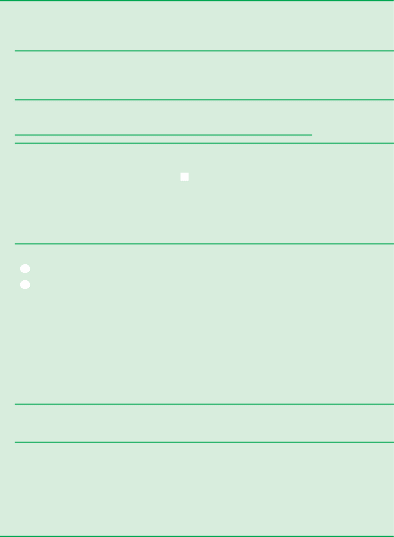 FORM
SSOCS-1
FORM
SSOCS-1
§,1"¤ 21
Please return your completed questionnaire in the enclosed postage-paid envelope or mail it to:
U.S. Census Bureau
Attn: DCB/PCSPU, Building 60A 1201 E 10th Street Jeffersonville, IN 47132-0001
Thank you very much for your participation in this survey. If you have any questions, please contact us, toll-free, at: 1-888-595-1332 or by e-mail at: [email protected]
To learn more about this survey and to access reports from earlier collections, see the School Survey on Crime and Safety (SSOCS) website at:
http://nces.ed.gov/surveys/ssocs
Additional data collected by the National Center for Education Statistics (NCES) on a variety of topics in elementary, secondary, postsecondary, and international education are available from the NCES website at:
For additional data collected by various Federal agencies, including the Department of Education, visit the Federal Statistics clearinghouse at:

22 §,1"¤ 111601
FORM SSOCS-1
| File Type | application/vnd.openxmlformats-officedocument.wordprocessingml.document |
| File Modified | 0000-00-00 |
| File Created | 2021-01-15 |
© 2026 OMB.report | Privacy Policy